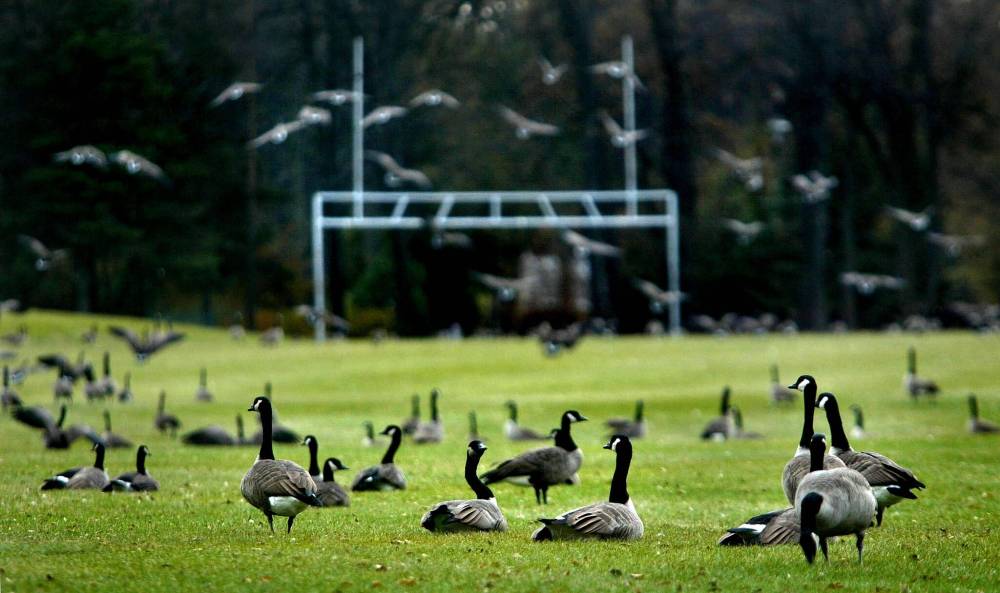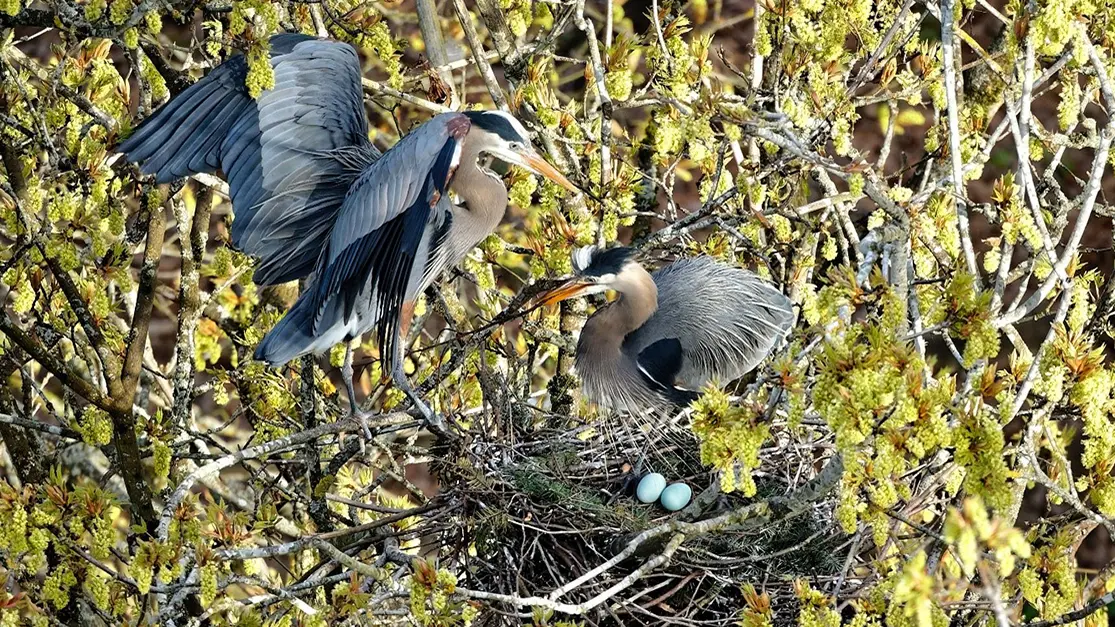Have you ever stopped to watch a bird build its nest right in your city park? It’s a simple scene, but it holds a secret world full of life and wonder.
Bird nesting in city parks is more common than you think, and it brings nature closer to your daily routine. Understanding how and why birds choose these green spaces can change the way you see your neighborhood. Stick with me, and you’ll discover surprising facts that make your next park visit more exciting and meaningful.
Ready to see your local park through new eyes? Let’s dive in.

Credit: www.reddit.com
Urban Birds In City Parks
City parks provide important homes for many birds. These green spaces offer food, shelter, and nesting spots.
Birds in cities face unique challenges. They adapt to the busy, noisy, and crowded environment.
Common Species In Urban Areas
Many birds live in city parks. Some species are easy to spot and often build nests nearby.
- Rock Pigeon: Found on buildings and park statues.
- House Sparrow: Common near benches and bushes.
- European Starling: Nests in tree holes and ledges.
- American Robin: Builds nests in trees and shrubs.
- Blue Jay: Likes tall trees and dense foliage.
Adaptations To City Life
Urban birds change their habits to live well in cities. They find new food sources and safe nesting spots.
Birds may nest in unusual places. They use buildings, streetlights, and even vents for shelter.
- Use man-made structures for nests.
- Eat human food scraps and insects.
- Sing louder to be heard over noise.
- Be active at different times to avoid people.
- Stay alert for cars and predators.

Credit: www.winnipegfreepress.com
Nesting Habits In Urban Settings
Birds in city parks build nests to protect their eggs and young. Urban areas offer unique places for nesting. Birds adapt their habits to these busy environments.
Understanding where and how birds nest in cities helps us support their survival. Nesting habits vary by species and available resources in parks.
Preferred Nesting Sites
Birds choose different spots in city parks for their nests. Trees and shrubs are common places. Some birds use man-made structures too.
- Tree branches offer safety from ground predators.
- Dense shrubs provide cover and camouflage.
- Building ledges and vents serve as nest sites for some species.
- Park benches and light poles sometimes hold nests.
- Birdhouses installed by people attract cavity-nesting birds.
Materials Used For Nesting
Birds use many materials found in urban parks. They pick natural and man-made items to build strong nests. Material choice depends on what is nearby.
| Material | Description |
| Twigs and small branches | Provide structure and support |
| Leaves and grass | Line the nest for softness |
| Feathers | Help keep warmth inside the nest |
| String and yarn | Used for binding and weaving |
| Paper and plastic bits | Sometimes added for insulation or filling gaps |
Challenges For Urban Nesters
Birds nesting in city parks face many challenges. These challenges affect their ability to build safe homes and raise young birds.
Understanding these challenges helps us protect urban wildlife and support bird populations in busy areas.
Predators And Threats
City parks have many predators that threaten birds and their nests. These include animals and other risks that make nesting difficult.
- Domestic cats hunt birds and destroy nests.
- Rats and squirrels can eat eggs and baby birds.
- Large birds may steal eggs from smaller species.
- Pollution can weaken birds and reduce their chances to survive.
Human Disturbances
People in city parks can disturb birds during nesting times. This can cause nests to fail or birds to leave their homes.
| Disturbance | Effect on Birds |
| Noise from crowds | Stress and abandonment of nests |
| Park maintenance | Destruction of nests and habitat |
| Pets off leash | Chasing and harming birds |
| Litter and trash | Attracts predators and causes harm |
Benefits Of Urban Nesting
Birds build nests in city parks to lay eggs and raise their young. Urban nesting helps birds survive in busy areas. It also brings many benefits to the environment and people.
City parks give birds safe places to live. Birds in parks can find food, water, and shelter. This helps keep bird populations healthy and strong.
Supporting Biodiversity
Bird nesting in city parks helps keep many different bird species alive. Each bird plays a role in the environment. They help plants grow by spreading seeds and pollinating flowers.
More birds mean more insects are eaten. This keeps insect numbers balanced and reduces pests. Healthy bird populations show that the park is a good home for wildlife.
- Birds spread seeds for new plants
- Birds pollinate flowers
- Birds control insect populations
- Bird diversity shows a healthy park
Educational Opportunities
Bird nests in city parks give people a chance to learn about nature. Children and adults can watch birds build nests and care for their babies. This helps people understand how birds live and grow.
Schools and groups can use parks for lessons about wildlife. Watching birds can inspire people to protect nature. It also teaches respect for animals and their homes.
- Watch birds build and care for nests
- Learn about bird life cycles
- Use parks for school nature lessons
- Inspire care for the environment
How To Support Bird Nesting
Birds need safe places to build nests and raise their young. City parks can help by providing good habitats.
We can help birds by making parks friendlier for nesting. Small actions make a big difference.
Creating Safe Habitats
Safe habitats protect birds from predators and harsh weather. Trees and shrubs give birds places to hide and build nests.
Leaving natural areas undisturbed helps birds feel safe. Avoid cutting down trees or clearing brush during nesting season.
- Plant native trees and bushes
- Keep some areas wild and natural
- Limit human activity near nests
- Provide water sources like small ponds
Installing Nesting Boxes
Nesting boxes give birds a safe spot to lay eggs. They work well where natural tree holes are rare.
Place boxes at the right height and face them away from strong wind. Clean boxes yearly to keep birds healthy.
- Use untreated wood for boxes
- Mount boxes 5 to 10 feet above ground
- Face openings away from wind and direct sun
- Check and clean boxes after each nesting season

Credit: www.destinationvancouver.com
Notable City Parks For Birdwatching
City parks are great places to watch birds. Many birds build nests there each year. These parks offer safe spaces for birds in busy areas.
Birdwatchers enjoy visiting these parks to see different bird species. Nesting season is a special time to observe bird behavior closely.
Top Urban Parks With Rich Birdlife
Several city parks have diverse bird populations. They provide food, shelter, and nesting spots for many birds.
- Central Park, New York – Home to over 200 bird species
- Golden Gate Park, San Francisco – Popular for waterfowl and songbirds
- Hyde Park, London – Offers habitats for woodpeckers and owls
- Chapultepec Park, Mexico City – Known for migratory and resident birds
- Stanley Park, Vancouver – Hosts bald eagles and great blue herons
These parks have trails and viewing areas for birdwatchers. Early mornings are the best time to spot nesting birds.
Seasonal Nesting Patterns
Bird nesting times change with the seasons. Most city birds start building nests in spring. This is when food is easy to find.
Summer is the time when chicks hatch and grow. Parents work hard to feed their young. By late summer, many young birds leave the nest.
- Spring: Nest building and egg laying
- Summer: Hatching and feeding chicks
- Late summer: Fledging and learning to fly
- Fall and winter: Rest and migration for some birds
Watching these patterns helps birdwatchers understand bird life. It also shows how city parks support wildlife through the year.
Frequently Asked Questions
Why Do Birds Prefer Nesting In City Parks?
Birds choose city parks for nesting due to abundant trees, food sources, and relative safety. Parks offer shelter and less disturbance than urban areas. These green spaces provide ideal habitats, supporting bird populations and biodiversity within cities, making them attractive nesting sites.
What Types Of Birds Nest In City Parks?
Common city park nesting birds include pigeons, sparrows, robins, and starlings. These birds adapt well to urban environments and find food easily. Some parks also host migratory birds during nesting seasons, showcasing diverse avian life within city boundaries.
How Can City Parks Support Bird Nesting?
City parks can support nesting by preserving native plants, providing nesting boxes, and minimizing pesticide use. Maintaining natural habitats encourages birds to nest safely. Public awareness and responsible park management also help protect nesting sites from disturbances.
When Is The Bird Nesting Season In City Parks?
Bird nesting season in city parks typically runs from early spring to late summer. During this time, birds build nests, lay eggs, and raise chicks. Seasonal changes in temperature and food availability influence nesting activities in urban green spaces.
Conclusion
City parks offer a vital refuge for birds. They find safety and food. These green spaces support diverse bird species. Observing them enriches our urban lives. It teaches us about nature. Respect for wildlife increases. Local communities benefit from this connection.
Birdwatching becomes a peaceful city activity. It brings joy and relaxation. Protecting these habitats is crucial. Everyone can play a part. Plant native trees and shrubs. Reduce pollution and noise. Small actions make a big difference. Encourage others to join in.
Together, we can support urban wildlife. Our parks and birds deserve it.

